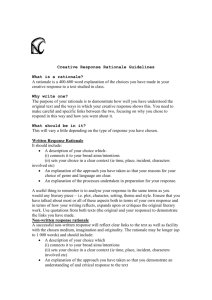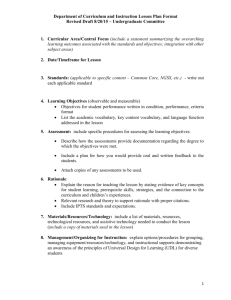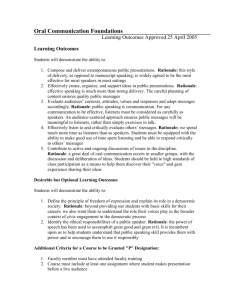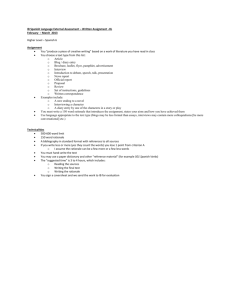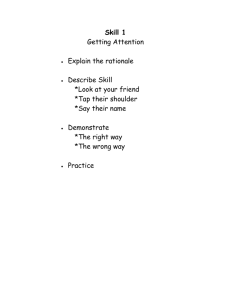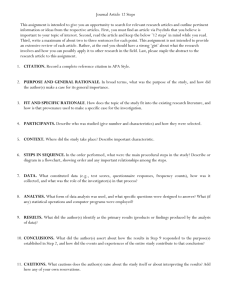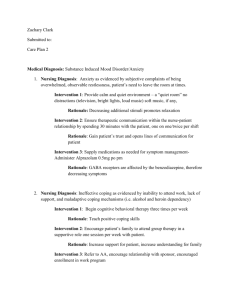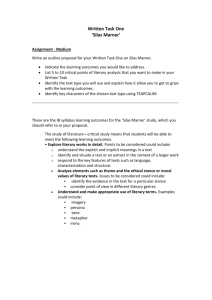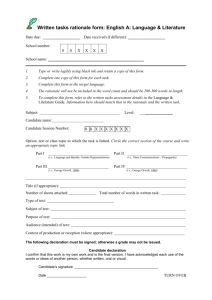Language B: HL Written Assignment Guide
advertisement
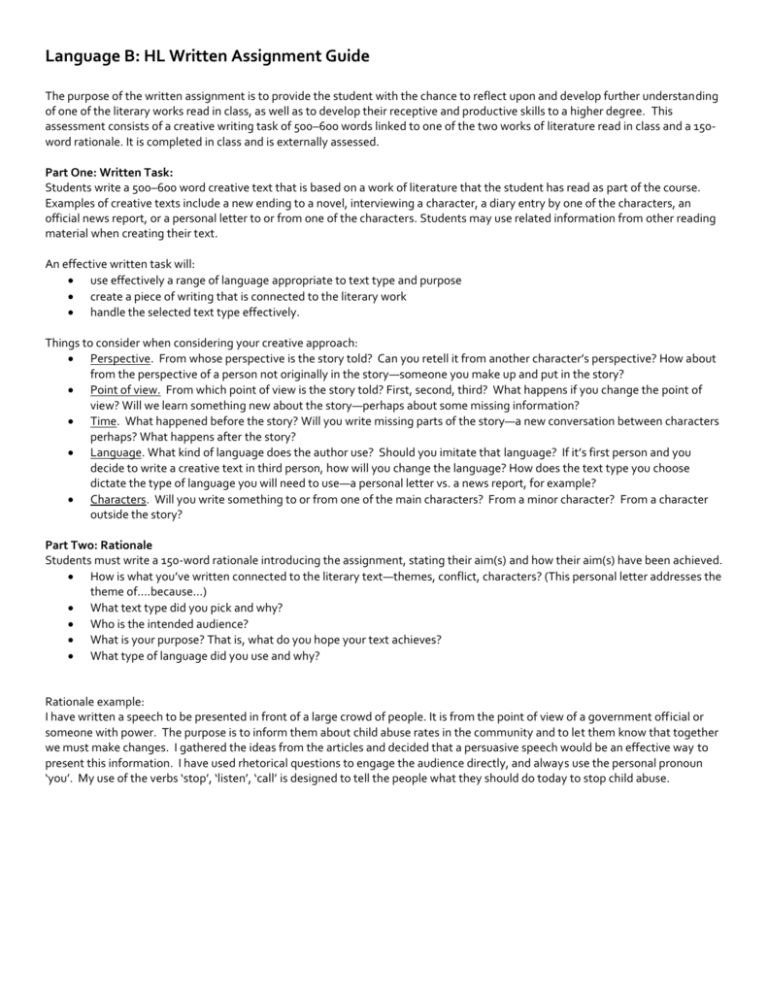
Language B: HL Written Assignment Guide The purpose of the written assignment is to provide the student with the chance to reflect upon and develop further understanding of one of the literary works read in class, as well as to develop their receptive and productive skills to a higher degree. This assessment consists of a creative writing task of 500–600 words linked to one of the two works of literature read in class and a 150word rationale. It is completed in class and is externally assessed. Part One: Written Task: Students write a 500–600 word creative text that is based on a work of literature that the student has read as part of the course. Examples of creative texts include a new ending to a novel, interviewing a character, a diary entry by one of the characters, an official news report, or a personal letter to or from one of the characters. Students may use related information from other reading material when creating their text. An effective written task will: use effectively a range of language appropriate to text type and purpose create a piece of writing that is connected to the literary work handle the selected text type effectively. Things to consider when considering your creative approach: Perspective. From whose perspective is the story told? Can you retell it from another character’s perspective? How about from the perspective of a person not originally in the story—someone you make up and put in the story? Point of view. From which point of view is the story told? First, second, third? What happens if you change the point of view? Will we learn something new about the story—perhaps about some missing information? Time. What happened before the story? Will you write missing parts of the story—a new conversation between characters perhaps? What happens after the story? Language. What kind of language does the author use? Should you imitate that language? If it’s first person and you decide to write a creative text in third person, how will you change the language? How does the text type you choose dictate the type of language you will need to use—a personal letter vs. a news report, for example? Characters. Will you write something to or from one of the main characters? From a minor character? From a character outside the story? Part Two: Rationale Students must write a 150-word rationale introducing the assignment, stating their aim(s) and how their aim(s) have been achieved. How is what you’ve written connected to the literary text—themes, conflict, characters? (This personal letter addresses the theme of….because…) What text type did you pick and why? Who is the intended audience? What is your purpose? That is, what do you hope your text achieves? What type of language did you use and why? Rationale example: I have written a speech to be presented in front of a large crowd of people. It is from the point of view of a government official or someone with power. The purpose is to inform them about child abuse rates in the community and to let them know that together we must make changes. I gathered the ideas from the articles and decided that a persuasive speech would be an effective way to present this information. I have used rhetorical questions to engage the audience directly, and always use the personal pronoun ‘you’. My use of the verbs ‘stop’, ‘listen’, ‘call’ is designed to tell the people what they should do today to stop child abuse. Formal guidelines The subject of the written assignment must be the choice of the student in consultation with the teacher. This assignment should be written in the second year of the course and must be completed during school hours under teacher supervision. The written assignment and the rationale must be in the target language and handwritten. It must be the independent work of the student (with the teacher’s guidance). The literary work must be written originally in the target language and studied in the target language. The use of dictionary and reference material is permitted. The suggested time to complete the task is three to four hours, which does not need to be in one sitting. This timing includes organizing the task, the writing of a draft and of the final text and rationale. The written assignment will be accompanied by: – a coversheet signed by both student and teacher. On this coversheet the teacher will provide the title and author of the work used and a brief summary of it. – a rationale – a bibliography in standard format with references to all sources.


